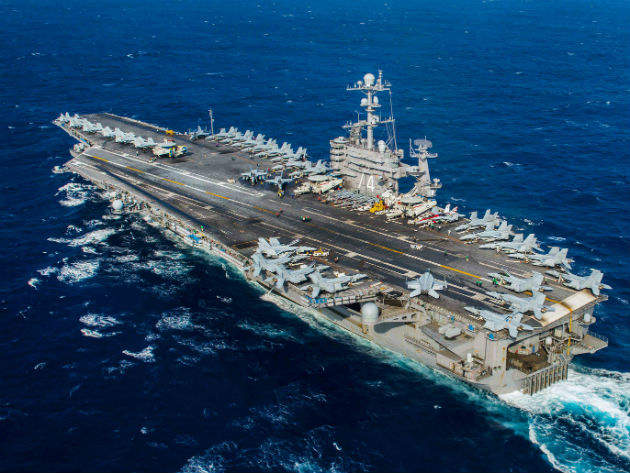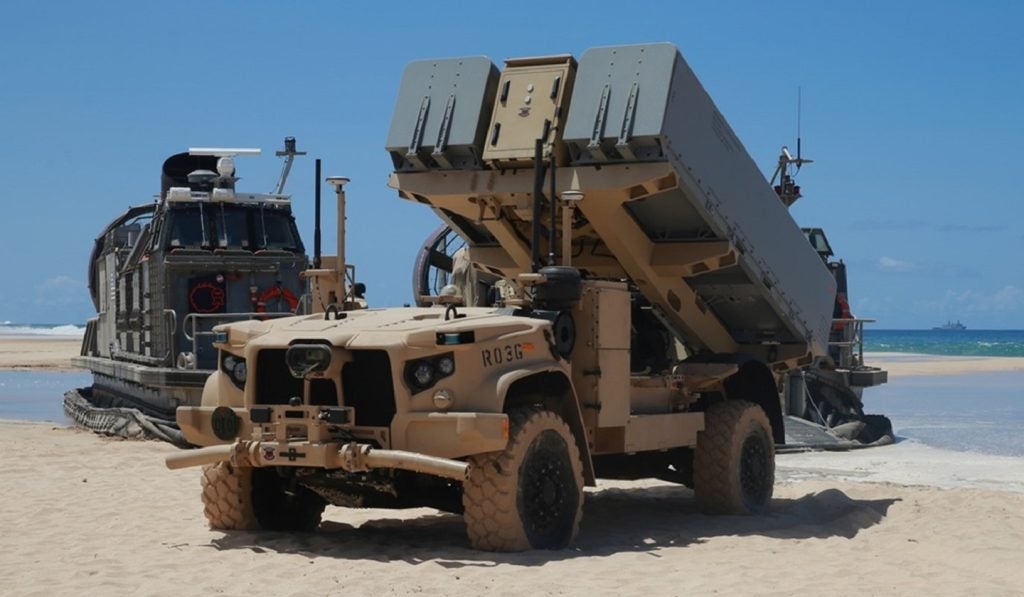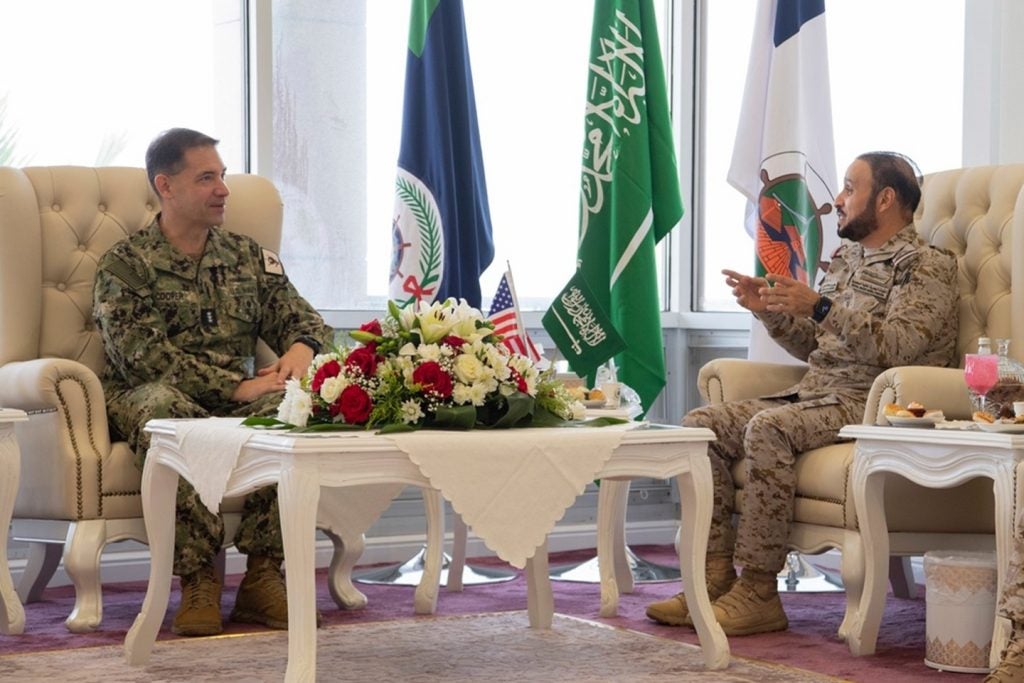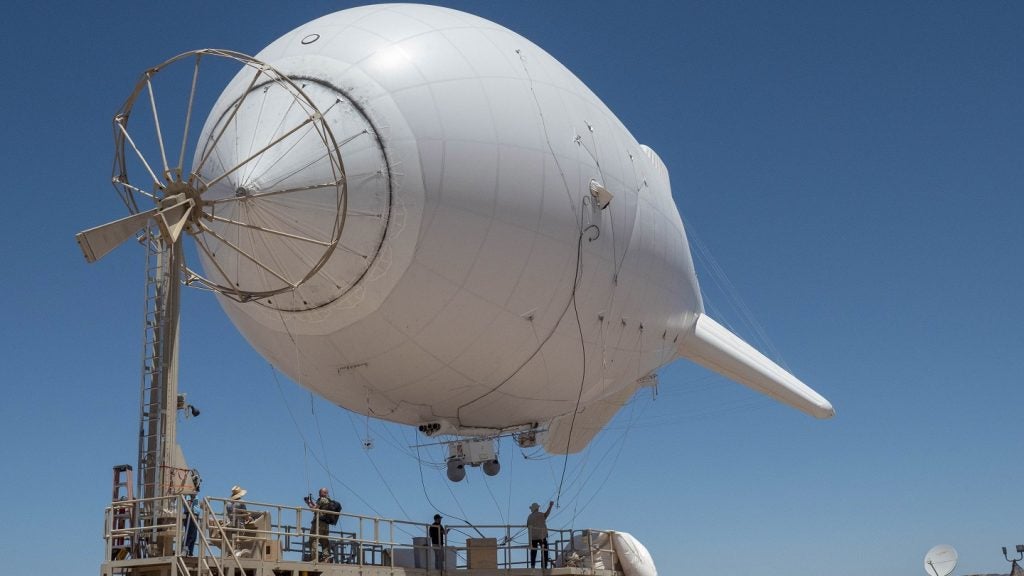

In December 1907, US President Theodore Roosevelt dispatched 16 battleships – dubbed the 'Great White Fleet' after their white-painted hulls – on a 15-month voyage to circumnavigate the globe and show-case America's burgeoning military power to the world. More than a century later, the US Navy now hope its new 'Great Green Fleet' will prove just as much of a game-changer in its own way.
Named by Secretary of the Navy Ray Mabus in honour of Roosevelt's original round-the-world armada, the Great Green Fleet is intended to usher in a new era of naval energy innovation that will increase both combat capability and operational flexibility.
Bold ambition
"We have never been a nation to shy away from such bold ambition, and with that thought in mind, in 2009, I set some aggressive energy goals for the Department of the Navy," Mabus said at a ceremony on 20 January 2016 at San Diego's Naval Air Station North Island marking the deployment of the USS John C. Stennis carrier strike group (CSG).
At the end of the event, the Arleigh Burke-class guided missile destroyer USS Stockdale departed port, officially becoming the first US Navy ship ever to run on an alternative fuel blend in regular operation, and getting the Great Green Fleet initiative well and truly under way.
The US Navy has used alternative fuels before – most notably during the RIMPAC 2012 exercise, when five ships of that CSG and its associated aircraft burned a 50:50 mix of conventional diesel or aviation fuel and biofuel derived from old cooking oil, chicken fat and algae. This time around, however, there are some significant differences.
How well do you really know your competitors?
Access the most comprehensive Company Profiles on the market, powered by GlobalData. Save hours of research. Gain competitive edge.

Thank you!
Your download email will arrive shortly
Not ready to buy yet? Download a free sample
We are confident about the unique quality of our Company Profiles. However, we want you to make the most beneficial decision for your business, so we offer a free sample that you can download by submitting the below form
By GlobalDataPerhaps the greatest of these is that this is a real-world deployment, not simply an exercise, and represents a very clear statement of the navy's faith in alternative fuel's performance under operational conditions. From the outset, Mabus made it clear that he sees energy as one of the key priorities of his tenure in office because of the impact it has on naval combat capability, and launching his Great Green Fleet in 2016 was one of the goals he set back in 2009. The first operational use of a carrier strike group partly powered by biofuel is a significant milestone in his over-all plan.
Beefing it up
The fuel itself is a departure from previous mixes, too. Although the navy had again hoped to run on a 50:50 mix, the tanks of the USS Stockdale and the other vessels involved in the USS John C. Stennis carrier strike group's seven-month deployment hold only 10% biofuels, this time made from beef fat. It is also much cheaper than before, working out remarkably competitive with conventional diesel at a time when oil prices are languishing at record lows.
Just four years ago, the biofuel purchased for use during RIMPAC 2012 cost around $26 per gallon – roughly seven times the then average retail price of diesel in the US. At the time Mabus' so-called 'vanity project' came in for some heated criticism, particularly in the US Congress, as a result. Since then, however, the cost of biofuels has plummeted.
"We paid $26 a gallon then. We're paying 13 times less today, just three and a half years later," Mabus said at the San Diego ceremony. "That's the story, that's the success."
There has been a lot of investment put into achieving that success. In 2011, the Obama administration charged Mabus and his Department of Agriculture counterpart, Tom Vilsack, with partnering with the private sector to kick-start a domestic advanced biofuels industry as part of a $510m joint investment programme. The resulting 'Farm to Fleet' programme became the catalyst to stimulate the development of a range of potential advanced drop-in biofuel equivalents for F-76 marine diesel and JP-5 aviation fuel for navy and US Marine Corps ships and aircraft.
The fuel blend of beef tallow and conventional diesel powering today's Great Green Fleet was provided by California-based AltAir Fuels as part of a contract for a total of 77.6 million gallons, purchased through the navy and Department of Agriculture partnership. Of the $2.05 per gallon purchase price, according to Mabus, 14 cents supports the ranchers in the Midwest who supply the tallow waste.
The new normal
A few million gallons and a 10% mix is only the beginning. In 2014, the US Department of Defense awarded grants of $210m under the Defense Production Act to three companies – Emerald Biofuels, Fulcrum BioEnergy and Red Rock Bio – to help fund the construction of new biorefineries to produce advanced, 'drop-in' biofuels at a cost competitive price for the military. Although they are all yet to be built, by 2018 they are expected to be in action and providing over 100 million gallons of high-grade biofuel from the likes of municipal solid waste, woody biomass, and waste fat.
It is all about establishing what Mabus has called a "new normal" where naval vessels routinely run on biofuel-rich mixes – and the drivers for it are clear.
According to figures from the Defense Logistics Agency, the navy uses around 3.5 million gallons of fuel a day – accounting for roughly a quarter of the DoD's total usage. Having the greatest expeditionary fighting fleet that the world has ever seen potentially dependent on foreign oil, sourced from some of the more volatile regions of the globe, does not sit easily with Mabus – hence his aggressive energy goals for the service.
Those targets include providing at least half of shore-based energy needs from alternative sources by 2050, achieving 50% of all energy from alternative sources by 2020 and half of the navy and Marine Corps installations becoming net energy zero facilities by 2020.
"Diversifying our energy sources arms us with operational flexibility and strengthens our ability to provide presence, turning the tables on those who would use energy as a weapon against us," Mabus has said, estimating that around eight million barrels of biofuel per year will be required to help achieve this by 2020.
The great marine greenwash?
Unsurprisingly, the focus on biofuel has drawn its share of criticism and controversy – and not just from the Republicans in Congress. While the high cost of subsidising the nascent biofuel industry has been the bone of contention for many political opponents, environmentalists too have poured scorn on the idea of taking land out of food production to grow the raw materials needed. While at least for now, with waste beef fat as the feedstock that is not an issue, some feel that it may become one in future, given the amount of fuel that will be required.
Whether the initiative is more about environmental symbolism – or a 'greenwash' as it has been less charitably described – than energy security or tactical advantage is something of a moot point, but it is clear that the US Navy is looking very carefully at its use of energy. Fuel source aside, the Great Green Fleet is also using a range of energy saving measures, including stern flaps, LED lighting and energy dashboards to monitor fuel consumption and performance in real-time.
Other moves, such as the shift to increased electrification across the fleet, also point to a longer-term focus on maintaining strategic advantage through improved fuel economy and enhanced operational flexibility.
"When it comes to power, my focus has been about one thing and one thing only: better warfighting," Mabus told his audience in January. "The Great Green Fleet shows how we are transforming our energy use to make us better warfighters, to go farther, stay longer and deliver more firepower. In short, to enable us to provide the global presence that is our mission."







